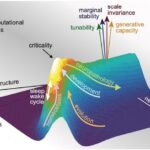
Credit: STEVE GSCHMEISSNER/ Science Photo Library/ Getty Images
Can we predict—and prevent—why transplanted beta cells fail? A preclinical study titled “ChemPerturb-seq screen identifies a small molecule cocktail enhancing human beta cell survival after subcutaneous transplantation,” from Weill Cornell Medicine, has identified a sex-specific strategy to enhance the survival of transplanted pancreatic islets, potentially improving outcomes for patients with type 1 diabetes.
Using a single-cell RNA sequencing–based chemical screening tool dubbed ChemPerturb-seq, researchers pinpointed a small molecule cocktail that boosted islet function in female mice, and, with two added molecules, achieved similar results in males.
“One surprising result from our study was a clear difference between male and female animals,” said Shuibing Chen, PhD, director of the Center for Genomic Health at Weill Cornell Medicine and senior author of the study published in Cell Stem Cell. “When we transplanted human islets that were pre-treated with a mix of helpful molecules (called LIP) into female mice, the islets survived better and worked more effectively than untreated ones. But in male mice, the same LIP treatment didn’t help.”
That LIP mixture—comprising beta-lipotropin 61-91, insulin growth factor (IGF)-1, and prostaglandin E2—was discovered via in vivo barcoded screening and ChemPerturb-seq. However, when its efficacy fell short in males, the team turned back to their AI-powered platform for answers.
“To understand why, we used ChemPerturb-seq, an AI-powered tool we created to study how cells respond to different treatments,” said Chen. “It suggested that two hormones, serotonin and histamine, could help improve islet survival. When we added these two hormones along with LIP, the islet function improved in male mice, too.”
Notably, both serotonin and histamine are known to occur at higher levels in females than males, possibly explaining the initial discrepancy and revealing an underappreciated sex difference in transplant response.
In type 1 diabetes, immune cells destroy insulin-producing beta cells in the pancreatic islets, leaving patients dependent on lifelong insulin therapy. While the FDA approved the first islet cell therapy product, Lantidra, in 2023, a significant portion—up to 60%—of transplanted cells often die within days, Chen told GEN. Current protocols typically deliver donor islets to the liver via the portal vein. The subcutaneous space offers a safer, more accessible alternative, though it poses issues such as low oxygen and inflammation, continued Chen.
Jeya Vandana, a graduate student in the Tri-Institutional PhD Program in Chemical Biology and first author, had an idea to address this problem. “[Vandana] combined chemical screens with single-cell RNA-sequencing technology so that we could check multiple readouts in one experiment,” said Chen.
The resulting ChemPerturb-seq platform allows researchers to profile 46 small molecules, including hormones, autacoids, and growth factors, and trace their responses in human beta cells via unique barcodes. In tandem, the team developed an open-access resource—ChemPerturbDB.
“Traditional drug testing methods usually examine one effect at a time for each compound, which takes a lot of time and resources,” Chen told GEN. “Our method can be used to study multiple gene expressions and many cellular responses.”
The AI-guided platform not only revealed LIP as a protective cocktail for female-transplanted islets but also flagged serotonin and histamine, which restored the cocktail’s efficacy in male mice—a formulation the team now refers to as LIPHS.
Looking ahead, the researchers plan to expand their small-molecule profiling to include 300 FDA-approved drugs and assess how these interact with human beta cells. Their long-term vision includes possibly discovering new uses for existing medicines and improving treatments for diseases like diabetes. “These small molecule combinations may eventually help improve outcomes for patients receiving the FDA-approved islet transplantation therapy,” said Chen.
“Over the past few years, many types of biological data—like single-cell RNA sequencing, multi-omics, and spatial transcriptomics—have been published,” Chen added. “However, these complex datasets are often difficult for laboratory and clinical scientists to access and use without help from bioinformatics experts… Our ChemPerturbDB is built for this purpose.”
The study’s integrated use of transcriptomic profiling, in vivo screening, and computational modeling highlights how AI and single-cell technologies can advance precision strategies for transplantation therapies, while also reminding scientists to consider sex differences along the way.



